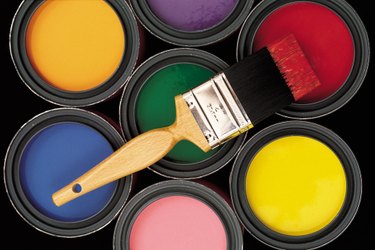
Many artists enjoy taking creative liberties when it comes to their artwork. This may come in the form of an abstract painting or an ambiguous sculpture or even portraits made with mixed media. Acrylics, markers and colored pencils are all common media in the art world. Watercolor and oil paints, however, are generally not the best choices when it comes to combining different styles.
Watercolor Paints
Video of the Day
Watercolors are made of water soluble pigments. They mix well with water and essentially stain the paper with color. Watercolors dry quickly and are generally used as a stand-alone medium.
Video of the Day
Oil Paints
Oil paints cannot be thinned with water and are rather thick. They produce paintings with textured surfaces and take anywhere from days to weeks to dry. "Acrylic Painting: A Complete Guide" notes that these paints are made specifically with linseed oil instead of water, which is the only difference between oil paints and watercolors.
Mixing the Paints
Oil and water tend to mix poorly. This creates an undesirable effect when watercolors and oil paints are combined. The paint becomes slimy, runny and difficult to paint with. It is also difficult (if not impossible) to layer the paints on top of one another. Watercolors, because of their staining ability, must adhere to the paper directly. They cannot stick to the surface of oil paints and will wipe off even when dry.
Alternatives
If you are looking to make oil paints thinner or more transparent, a better alternative is to use paint thinner. This works well with the oils in the paints and will create a better effect than mixing them with water soluble paints.